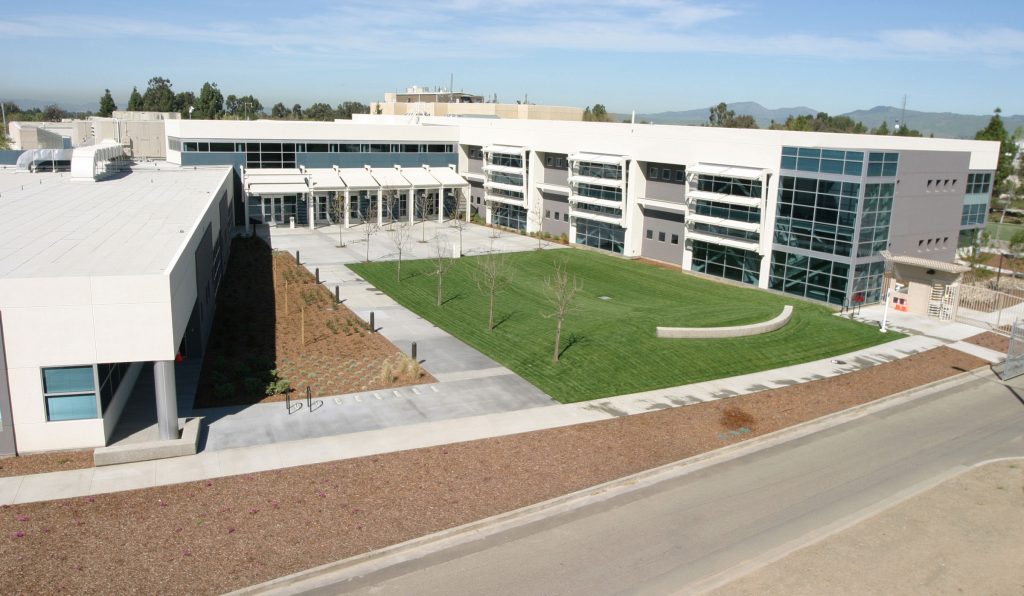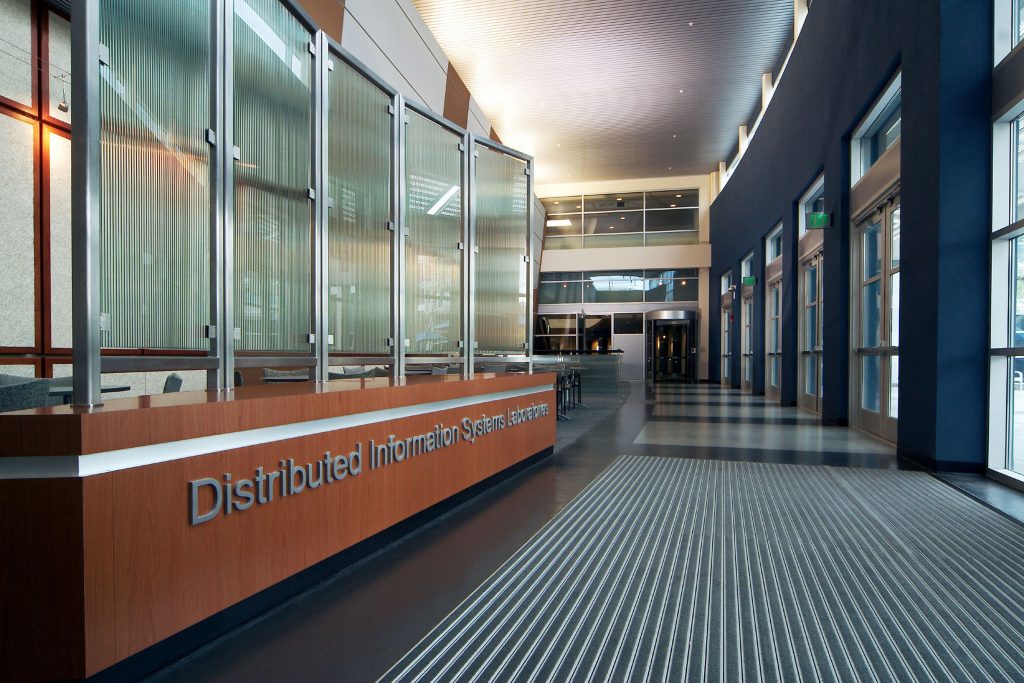
Download 300dpi JPEG image, ‘disl-3.jpg’, 516K (Media are welcome to download/publish this image with related news stories.)
LIVERMORE, Calif. — A dedication ceremony for the new Distributed Information Systems Laboratory (DISL) took place today on the grounds of Sandia National Laboratories in Livermore.
DISL will enable development and deployment of distributed information systems technologies for the Department of Energy/National Nuclear Security Administration’s (DOE/NNSA) nuclear weapons complex (NWC).
The $37.9M project, sponsored by the DOE/NNSA Advanced Simulation and Computing (ASC) program, is a critical element of the ASC strategy to develop and deploy high performance modeling and simulation capabilities into the NWC, said David Crandall, NNSA Assistant Deputy Administrator for Research, Development, and Simulation.
“DISL is another example of the DOE and NNSA commitment to keep the nation’s nuclear weapon complex infrastructure at the cutting edge of technology,” said Crandall.
DISL is a critical element of Sandia’s strategy to transform the engineering environment by integrating high fidelity modeling and simulation and seamless access to information into the routine way of doing business, said Tom Hunter, Sandia’s senior vice president for information, computation, and engineering sciences and head of the nuclear weapons program at Sandia.
“DISL will play a key role in this transformation by providing a facility to enable research, development, and prototyping of new technologies in a test-bed environment at Sandia’s California site,” said Hunter. Proven technologies will be deployed throughout the weapons complex.

Download 300dpi JPEG image, ‘disl-interior2.jpg’, 732K (Media are welcome to download/publish this image with related news stories.)
A key attribute of DISL, said Ken Washington, director of distributed information systems at Sandia/California, is that it provides offices and labs in both the limited area and the property protection area. The limited area spaces will enable ASC-developed technologies to be more readily prototyped in the secure, classified environment required for weapons work. The unclassified areas in DISL will make it easier to collaborate with industry and universities on distributed information technology research and development.
“Intel Corporation is proud to support the national laboratories and DOE/NNSA in the important mission of providing the advanced technology needed for the defense of our nation,” said Wilfred Pinfold, Director of the Intel Advanced Computing Center. “We look forward to continued collaboration with Sandia to advance high performance computing in support of critical national initiatives.”
The new facility is designed to provide work environments needed to successfully research, develop, prototype and deploy distributed computing and collaborative engineering solutions for the NWC. Research in DISL will focus on high performance computing based on ultra-scale cluster computers, visualization, networking, high performance simulation enablers such as design through analysis and uncertainty and optimization tools, cyber security, and collaborative technologies. Research and development workspace and laboratories include specialized computing and visualization research labs, a next-generation visualization design center, and collaborative facilities designed to enable local and distance interactions with people and information.
Located at the heart of the Sandia/California site, DISL is more than just a new building. “DISL is an exciting symbol for the future of the Sandia/California site and a statement about DOE and NNSA’s commitment to leverage the innovations that happen in industry into the execution of the ASC program,” said Sandia’s Washington.
Information on the Advanced Simulation and Computing (ASC) initiative can be found at http://www.nnsa.doe.gov/asc/home.htm.